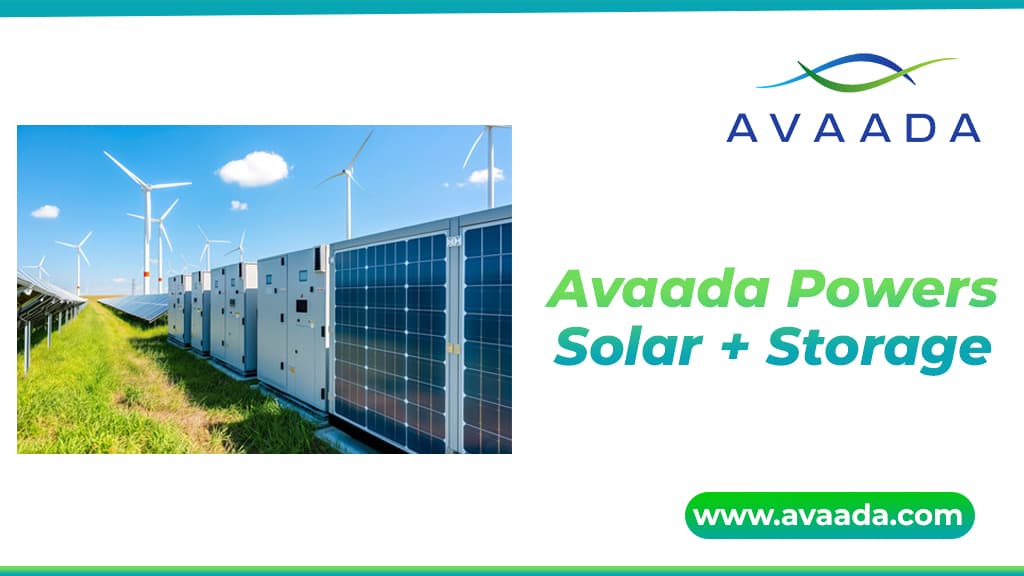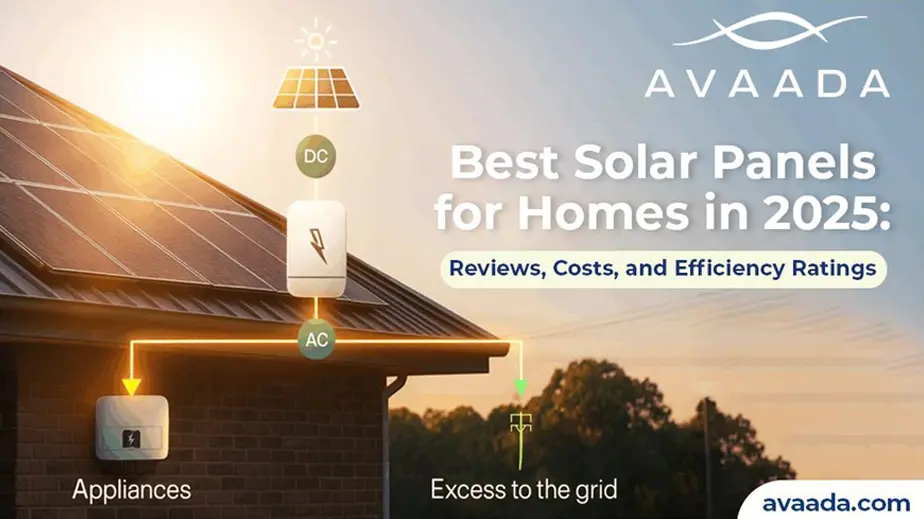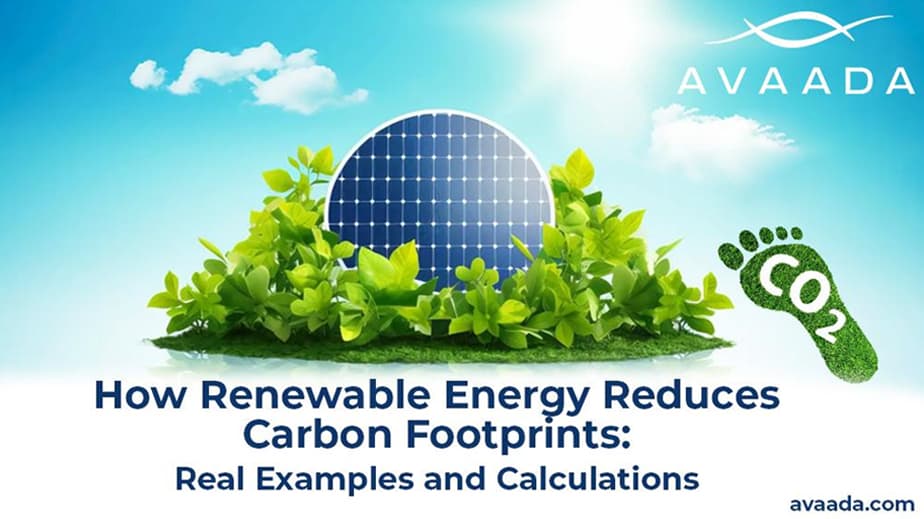As the world’s shift to renewable energy accelerates, one thing has been at the forefront of enabling reliability and scalability is grid-scale energy storage. Solar and wind energy will only become the leading sources of power once they are backed by solid storage systems that can balance supply and demand in real time.
In this new energy landscape, companies like Avaada are pioneering the transformation, combining cutting-edge solar energy storage systems with renewable assets to tap round-the-clock clean energy. From lithium-ion battery installation to innovative hybrid systems, grid-scale storage.
Does Grid-Scale Storage Matter?
In contrast to the traditional fossil fuel power plant, solar and wind produce electricity only when sunlight is available or wind is present. Such intermittency creates a severe challenge for the grid operators who have to supply a continuous power output.
Grid-scale energy storage provides a solution by:
- Storing excess renewable energy generated during off-peak periods produced during off-peak hours
- Releasing stored energy during low generation or high demand
- Offering ancillary services such as frequency regulation, voltage support, and spinning reserves
These features make variable renewables reliable power sources, supporting more in-depth renewable integration without affecting grid stability.
The Rise of Battery Energy Storage Systems (BESS)
Among the new generation of storage technologies, battery energy storage systems (BESS) have been adopted at the quickest rate because of their scalability, flexibility, and decreasing costs. Lithium-ion is still the market leader, but new entrants like sodium-ion, solid-state, and flow batteries are also picking up steam for longer durations and lower environmental impact.
Some of the most important advantages of BESS for grid-scale applications are:
- Fast response time (in milliseconds)
- Modular design that enables easy scaling
- High round-trip efficiency
- Least water and land usage vis-à-vis pumped hydro
With decreasing costs, their installation alongside solar farms on a large scale is becoming the new standard. This applies particularly to nations such as India, where peak demand arrives post-sunset.
To learn more about Battery Energy Storage Systems, explore our blog on “Pros, Cons and Applications of Battery Energy Systems (BESS)“
Avaada's Role in Advancing Grid-Scale Storage
As one of India’s top renewable energy players, Avaada is at the forefront of shaping the future of energy storage. With a growing portfolio of utility-scale solar projects and an emphasis on coupling battery storage, Avaada is making clean energy more flexible and reliable.
By combining solar energy storage systems with generation assets, Avaada ensures the power clean and also dispatchable, a crucial element for grid reliability and commercial viability.
Through co-located BESS installations and participation in national storage tenders, Avaada’s strategy demonstrates a deep appreciation of both technical and regulatory dynamics of India’s energy transition.
India's Energy Storage Landscape
India’s 500 GW non-fossil fuel target by 2030 has put energy storage in the spotlight. The government has initiated several measures to facilitate the deployment of grid-scale storage, such as:
- A 30 GWh Viability Gap Funding (VGF) scheme for battery storage projects
- Guidelines on storage in renewable tenders in draft
- Policy support for storage engagement in frequency management and other ancillary markets
These policy advancements are unlocking the commercial potential of storage, inducing utilities and private developers both to invest in grid-scale systems. The Ministry of Power has also highlighted the importance of energy storage in India’s future grid infrastructure, indicating long-term policy alignment.
New Trends in Grid-Scale Storage
A few important trends are shaping the destiny of grid-scale storage:
1 . Hybrid Renewable-Storage Projects
Integration of solar or wind with storage on one site lowers transmission expenses, maximizes land use, and provides a consolidated, dispatchable power supply. This hybrid configuration is gaining favor among developers and buyers of power.
2 . Longer Duration Storage
Current systems provide 1–4 hours of storage, the future will demand 8–12 hours or more. Technologies such as flow batteries and compressed air energy storage (CAES) are being investigated to bridge this gap.
3 . AI and Grid Intelligence
Intelligent control systems and AI-based software are maximizing the way batteries integrate with the grid. These platforms can predict demand, coordinate charge-discharge cycles, and maximize asset lifespan.
4 . Decentralized Storage Networks
Besides centralized plants, distributed storage systems of smaller capacities are being installed on the edge of the grid, particularly in residential and commercial applications. Such microgrids enhance access to energy while balancing the principal grid during peak hours.
Challenges and Opportunities
While promising, grid-scale energy storage still has numerous challenges to overcome:
- High initial capital expenses
- Limited local manufacturing of battery cells
- Insufficient standard safety and performance regulations
- Complexities of grid integration in legacy infrastructure
But every challenge also offers an opportunity. The development of energy storage production clusters, more investment in local supply chains, and a larger emphasis on clean energy innovation are all shifting the calculus quickly.
With India on the cusp of emerging as one of the world’s largest energy markets, the demand for efficient and scalable storage can only increase. Companies like Avaada, with extensive experience in clean energy deployment, stand to dominate the next generation of infrastructure build-out.
The Road Ahead
The energy future is not only renewable, it’s flexible, smart, and secure. Grid-scale storage will be the foundation of the future, supporting nations to move away from fossil fuels to sustainable power systems without sacrificing reliability.
For policymakers, it translates into creating regulatory systems that enable innovation and investment. For companies, it translates into embracing storage as a strategic asset, not merely a backup. And for energy leaders such as Avaada, it translates into continued innovation, development, and delivery of infrastructure that brings the promise of clean energy ever nearer to fruition.
Learn more about the Energy Storage – the Next Challenge in the Energy Transition
Conclusion
As the planet moves towards a carbon-neutral world, grid-scale energy storage will be the glue that holds the renewable systems intact. It enables solar to supply power after sunset, wind to support demand on calm days, and the grid to be intelligent and resilient.
With the right technologies, partnerships, and policy support, the next decade will witness energy storage shift from a niche to a necessity, fueling not just grids but sustainable growth for generations to come.








